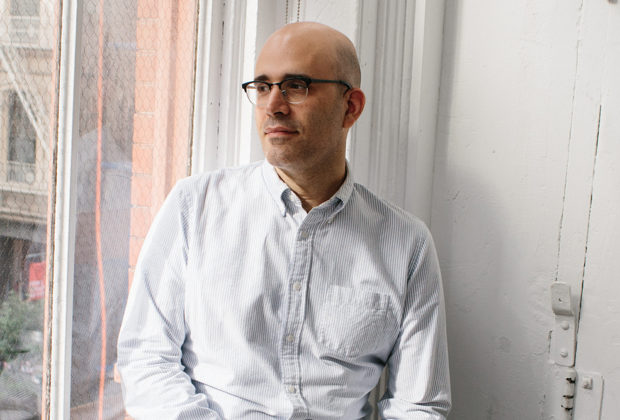Downtown Music Publishing handles some of the world’s most famous artists and songwriters. Subsequently, they’re responsible for a list of sync licenses too lengthy to mention. One of the company’s original members, Jedd Katrancha represents some 300-plus clients, including around 100 active writer clients.
Introduction to Publishing
I moved to New York from Virginia to pursue the music industry. I was lucky enough to have someone introduce me to music supervisor Susan Jacobs, who took me under her wing. I got to sit at the buyer’s seat with an incredibly talented supervisor; she was the first Emmy winner for the category of music supervision.
Through some work she was doing with a publishing company, I transitioned to publishing and knew that’s what I wanted to do. I worked at Spirit and EMI in the copyright department. I returned to Spirit with another gentleman who worked there, the founder of Downtown Publishing [Justin Kalifowitz]. I came with him to run creative and we’ve grown from two people to 110.
World Sync
My day-to-day focus is growing and looking after our global sync licensing team, making sure everybody is in the best position to find opportunities. And now I’m working with a global team; we have heads of sync in Sydney, London, Paris, Amsterdam and Tokyo. We’re continuing to think and expand globally.
A lot of what I’m doing is making sure we’re looking with the clearest vision in both directions —at the entire media landscape, understanding how other people work in their industries and that we’re in touch with them about all the productions they’re working on, and then internally, at our catalog and making sure we’re in tune with our writers and all the songs that are added to our catalog. If we know every project that might use our music and put forward our best songs every time, that’s as good as we can do. We don’t want to miss anything and it’s frustrating when we do. It’s inexcusable to have had the right song in our catalog and not pitched it.
Listening and Learning
There’s a level of understanding you need to apply to what you’re doing. You’re in the business of listening and learning. Doing that makes you a better sync person because it informs you on how to deliver music in a way that’s going to make the person you’re doing business with successful. We’re trying to drive revenue for our company but we do it by making other people successful, by making other projects as good as they can with our music as a bed for what they’re doing.
The Art of Sync
There’s this structural understanding of what songs work for picture. Some of that comes from a lifetime of digesting media and music. There are things you learn by listening to music supervisors and having them tell you what works, understanding that even people who’ve had that job for a long time will hear a song, think it’s great and then get in the edit suite and realize it’s not moving their picture along in the way they’d hoped. We lay our music against stock pictures sometimes and that helps us better understand which songs work with certain visuals.
Songs That Work Vs. Songs You Know
People come to us because they want our writers to write something original for them. Way more frequently, we’re licensing songs. When somebody’s licensing a hit song, they’re looking to make a connection with the viewer at first note. The song is doing some lifting for them in a different way than if they’re licensing a song that works for a scene but for a lot of viewers it’s going to be the first time they’ve ever heard that song.
Covers and Counterpoints
We’re still seeing cover songs used where there’s a re-imagination of a song. An up-tempo song is turned dark and moody. A happy lyric is made to sound creepy. And vice versa - something darker in tone is made to sound bright as a juxtaposition that’s done with a wink. It’s a big thing for us, looking within our catalog and finding songs we can breathe new life into.
We turned to a writer on our roster and had him cover Reverend Gary Davis’ gospel blues song, “Death Don’t Have No Mercy,” in a completely different approach than what the Grateful Dead or anybody else did. We licensed it to Call of Duty for a trailer for the most recent volume of that game. We also licensed one of his original songs to Call of Duty for a different trailer for the same game, so he won on both sides.
A Broad Representation
Through the years, we wanted to build a broad catalog and never attempt to corner any segment of the market. It’s important for us to touch on great American songbook writing, great Latin music, classic heavy metal and British invasion and work with the most interesting writers out there today. In the earliest days, people came to us because they loved our active roster. We had to remind them we had these other great songs from other eras. We don’t have to do that anymore.
Elevating Songwriters
We have an outstanding A&R team working to get our writers into sessions. They’re looking to elevate writers and see them land successful cuts with big artists. And if there’s another team supporting a song’s forward motion, that helps us. That gives us another story to tell when we’re working with somebody who’s interested in the song and they want to know if there’s anything else they can tell their team that might get them even more excited.
But we also want writers who understand what it is we’re trying to do with their music. Everybody knows what they would like to see happen. At the basic level, they want their music licensed. But [we need people who] really understand how music licensing works in terms of creating music that’s great for picture. We’ve started plenty of relationships that way—people who brought in licenses on their own because they’re great songwriters but haven’t been able to find a team to capitalize on what they’ve already built.
Representing John Lennon
I started playing music when I was five years old. An early fascination of mine was The Beatles. I named a seventh grade English project In His Own Write, which was an early John Lennon book. It’s tough for me to lay out how meaningful that deal was for us because it did a lot for us as a company. As far as letting us know we were on the right track, there’s no greater validation.
Smart Growth
We’ve achieved some things we’re incredibly proud of, but we’re just scratching the surface. We’ve been really mindful to staff at pace with the growth of the catalog so we didn’t have any moments where the catalog grew and then we hired to catch up. We’ve always stayed one step ahead of the catalog.
Staying Put
There’s this top-to-bottom belief that we’re on to something. Because of that, there’s an incredibly high retention rate. Writers will say, hey, does so and so still work at Downtown? Yeah, why wouldn’t they? But I’m realizing that might be their experience with previous administrators––high turnover and frequently getting to know a new team. We have plenty of people at Downtown who will celebrate their seventh, eighth, ninth, tenth anniversary at the company this year. And there’s the core four who have been here since the beginning. The fact that we’re as excited as we were at the beginning of the company and we’re all still here doing it together, I imagine that’s exciting for writers.
Years with Company: 11
Address: 485 Broadway, Third Floor, NY, NY 10013
Phone: 212-625-2747
FAX: N/A
Web: dmpgroup.com
Email: jeddk@dmpgroup.com
Clients: Santigold, Nikki Sixx, Ryan Tedder, Benny Blanco, Mos Def, John Lennon, Yoko Ono, Hans Zimmer












